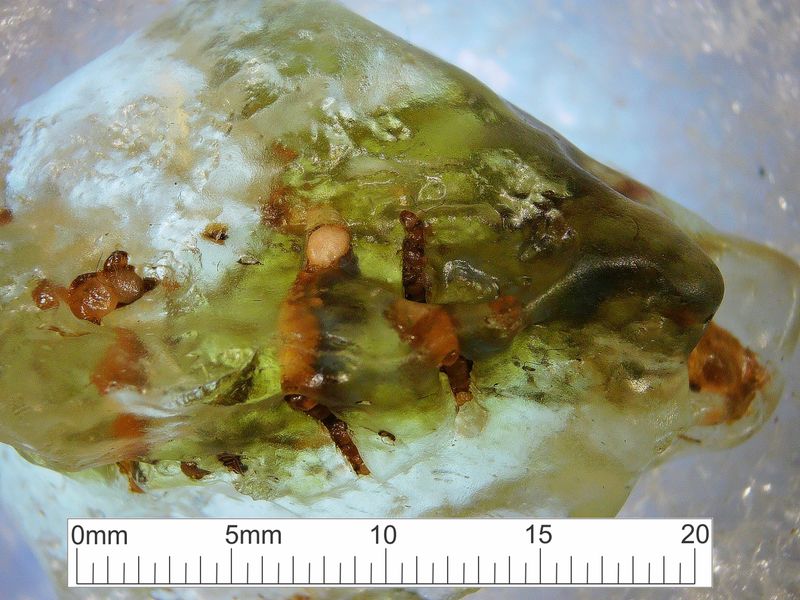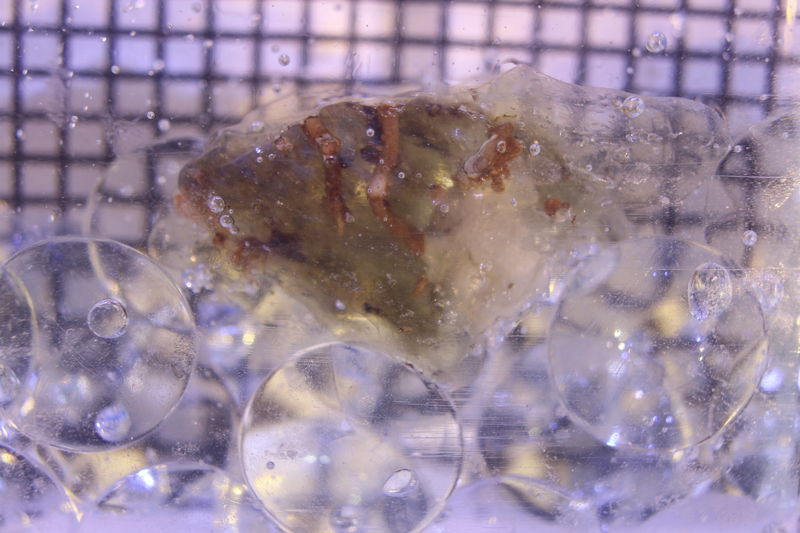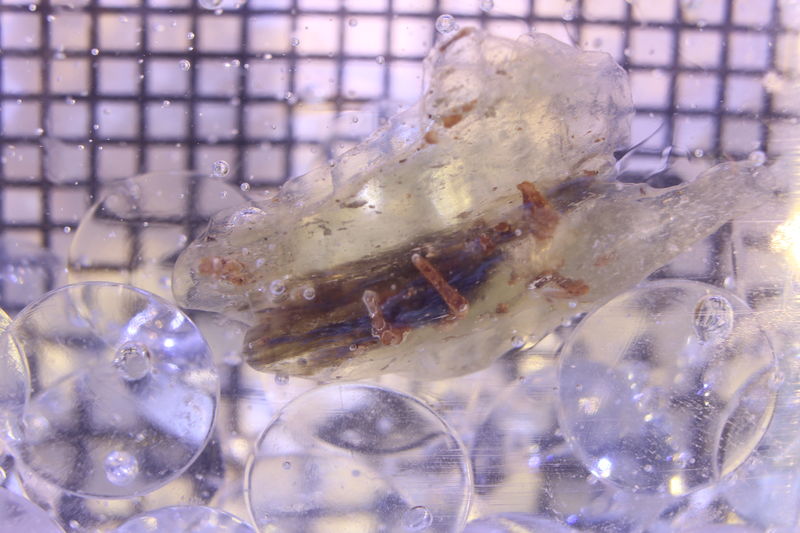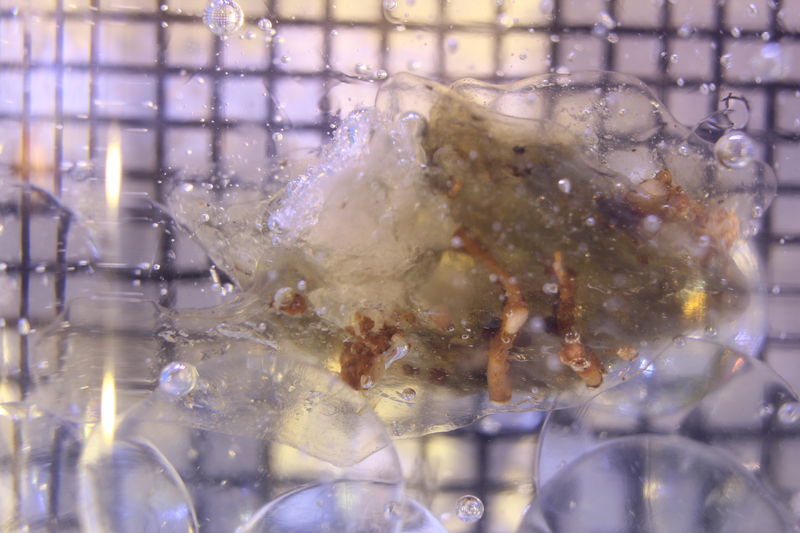| View previous topic :: View next topic |
| Author |
Message |
Craig Hagstrom
Joined: 10 Jan 2025
Posts: 29


|
 Posted: Jul 02, 2025 10:23 Post subject: Re: Libyan Desert Glass Structure Posted: Jul 02, 2025 10:23 Post subject: Re: Libyan Desert Glass Structure |
|
|
| marco campos-venuti wrote: | | I see epigenetic inclusions in LDG_14, not leaves. |
I don't know what you intend epigenetic to mean in this context. You're certainly free to hold any opinion, I'm merely presenting what I see and offering my interpretation.
For anyone needing a link, the document is at
https://archive.org/download/glass-49/Glass_71.pdf
(link normalized by FMF)
|
|
| Back to top |
|
 |
Craig Hagstrom
Joined: 10 Jan 2025
Posts: 29


|
 Posted: Jul 19, 2025 16:26 Post subject: Re: Libyan Desert Glass Structure Posted: Jul 19, 2025 16:26 Post subject: Re: Libyan Desert Glass Structure |
|
|
I had to up my photography game a bit. Got a new camera that can do better macro shots, and a lighted turntable to shoot small objects. This is a 3D model built from the blue silicone cast shown in my June 3 14:44 post above. This is about 13mm on its longest dimension.
The most interesting aspect is that the seed apparently had an individual sheath, in addition to the larger cap-shaped figure shown still embedded in the glass. This is analogous to the hull of a Spanish peanut enclosing two nuts, where the nuts then have individual reddish husks.
There is a jagged seam running vertically through this image, just left of object center. On first viewing, it might seem that part of the inner sheath is missing over about half of the nut. But the half seed shown was entirely enclosed in the cap figure, and the whole was buried in sand before the liquefaction event, so it’s reasonable to say the entire inner sheath must have also been present. I suggest this shows that some portions of the sheath were flat against the seed, and parts had separated from the seed and were flat against the outer cap.
This interpretation is supported by the transition at the top of what we might label a neck, about object center. From there up, the left sheath is raised and the right sheath is depressed. From there down, the left sheath is depressed and the right is raised. So I suggest this is a crack in the sheath, and the left and right sides were skewed centered about mid-image, where the separation between them disappears entirely. When the liquefaction event happened, some fluid ran between the sheath and the nut, and some flowed more between the sheath and the cap.
I submit that this specimen is a fossil plant part. I'm ready to hear alternate explanations.
I claim no special gift for this stuff. Everything I'm showing here can be duplicated by anyone who cares to go looking for it.
| Description: |
|
| Viewed: |
90 Time(s) |

|
|
|
| Back to top |
|
 |
Craig Hagstrom
Joined: 10 Jan 2025
Posts: 29


|
 Posted: Jul 20, 2025 19:26 Post subject: Re: Libyan Desert Glass Structure Posted: Jul 20, 2025 19:26 Post subject: Re: Libyan Desert Glass Structure |
|
|
This one definitely caught my attention. I bought it because frankly it looked like an insect. I'm not ready to jump into the deep end of the pool and assert that yet, but it's certainly evocative of an insect. The specimen is a little under two inches long.
At first I thought the piece had holes that had filled with sand to be cleared out, as my other specimens have. But after cleaning up to remove possible pollen and other dirt, these appear to be exact molds of the holes. So I photographed the piece to get a better understanding.
The last three images (28, 32, 39) are shot through Karo Syrup again, which cancels most of the refraction. The background grid can be seen nearly undistorted through the specimen. If it is an insect, it seems to be clutching something. Whatever this is, it was buried in the sand in this position when the event occurred. If it is an insect, it was almost certainly dead and perhaps disarticulated. I don't know which way was up.
The slightly pinkish blob in image 39 on the upper left is a bit if pink foam that I stuffed into a large cavity. In image 28 it's on the right side. If this is an insect fossil, the cavity seems to be about where the body would be. I used the foam to make the cavity visible, otherwise you'd just be looking through it.
| Description: |
|
| Viewed: |
33 Time(s) |

|
| Description: |
|
| Viewed: |
33 Time(s) |

|
| Description: |
|
| Viewed: |
33 Time(s) |

|
| Description: |
|
| Viewed: |
33 Time(s) |

|
| Description: |
|
| Viewed: |
33 Time(s) |

|
|
|
| Back to top |
|
 |
Craig Hagstrom
Joined: 10 Jan 2025
Posts: 29


|
 Posted: Jul 20, 2025 20:40 Post subject: Re: Libyan Desert Glass Structure Posted: Jul 20, 2025 20:40 Post subject: Re: Libyan Desert Glass Structure |
|
|
| Just free-range thinking here. The legs seem to go the wrong way for the cavity to be the body of the insect the legs belong to. But if that's the body of an insect the legs were grasping, it makes more sense. I wonder if the dark stuff could be wings. I'll see if I can get a better view of that. But that's enough for today, just got done mowing the lawn. I'm gonna watch puppies on youtube. :)
|
|
| Back to top |
|
 |
|





